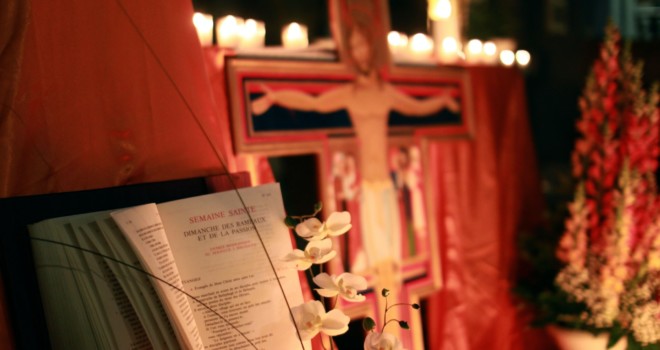I sat down in the retreat center cafeteria with my plate of homemade soup and salad. The table was already occupied with a smattering of participants, none of whom I knew. One woman mentioned her love of the Rule of St. Benedict, which influenced her decision to become an oblate. Another shook her head and chuckled, “I’m proud to be a secular Franciscan.” Still another (now a personal friend) shared that she was in the formation process to become a lay Dominican.
I remained silent, sipping my soup and absorbing the conversation. Always the outsider, I chose to ponder their spiritual preferences. Someone finally turned to me and asked, “What about you? Are you a Franciscan or Carmelite or what?” I checked my clothing to be certain I was not dressed as a religious, then, taken aback, I replied, “None of the above. I find beautiful aspects about all of these forms of spirituality.”
It surprised me that no one replied. It seems as though some Catholics focus on categorizing their faith, as if that is a necessary component for holiness or prerequisite for heaven. After the retreat, and for several subsequent months, I felt a need to fit my own faith into a tidy package, if only to fit in somewhere or to explain to others my particular lifestyle.
First, I considered the Franciscans. My mother had been a secular Franciscan when I was in high school, and I attended a local Franciscan university. My love of animals and the way God’s creation always spoke to my heart led me to believe I could begin formation in this particular spirituality.
Then I remembered my love of St. John of the Cross, St. Teresa of Avila, St. Therese of Lisieux, and St. Edith Stein. I understood the depth of their mysticism and was drawn to a more contemplative form of prayer. So I inquired to a friend about the process of Carmelite formation.
A few of my friends who became lay Dominicans tried to convince me that this was my true spiritual calling. I became more convinced as I read the works of St. Thomas Aquinas and recalled my strong devotion to St. Rose of Lima and St. Catherine of Siena.
The roadblocks were always the same: formation in any specific spirituality was laborious and required an inordinate amount of time. To some, this may appear an excuse, but I was in the thick of caring for three young daughters, including Sarah who has a rare disease.
In prayer, I felt lost. I wanted to find “the way” for me, the right path that would bring about the sense of belonging I so desperately needed. In time, God reminded me that He is The Way, and the different forms of prayer and devotion are equally beautiful and pleasing to Him.
In our everyday Christian walk, we do not need fancy and complex pathways to encounter God. Some prefer the rigors of formulaic prayers, such as novenas and rosaries and chaplets. Others are more gifted in spontaneous prayer or devotional reading or writing. Still others are talented in music and praise God through song.
In the same way, some Catholics enjoy attending the Latin Mass, while others are naturally drawn to the norvus ordo form. Within the liturgy, some feel more connected to God through traditional hymns and others find joy in contemporary praise and worship music.
I think of three scripture verses to summarize my thoughts on diversity in spiritual expressions of our faith:
- Seek first the Kingdom of God and His righteousness and all these things will be given to you besides. (see Matthew 6: 33)
- There are many parts but one body. (see 1 Corinthians 12: 14)
- There is neither Jew nor Greek, there is neither slave nor free person, there is not male and female; for you are all one in Christ Jesus. (see Galatians 3: 28)
Each type of spirituality — Carmelite, Franciscan, Benedictine, Dominican, etc. — are beautiful in themselves, and some are truly called to a specific formation of the Faith. But for the rest of us, it’s more important to seek the movements of the Holy Spirit than to force particular rubrics of prayer. Often, God invites us to love and encounter Him in ways foreign to us, perhaps to keep us open to His promptings and receptive to the moments He desires to reveal Himself to us.
✠
Photo by Sylvain Brison on Unsplash












